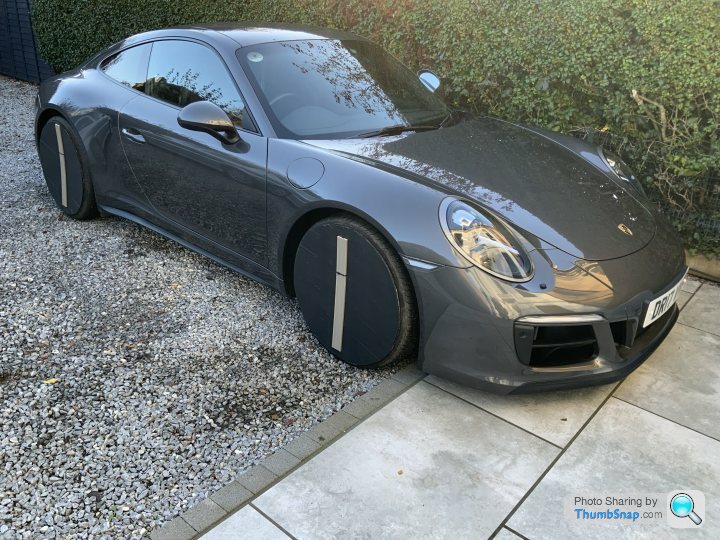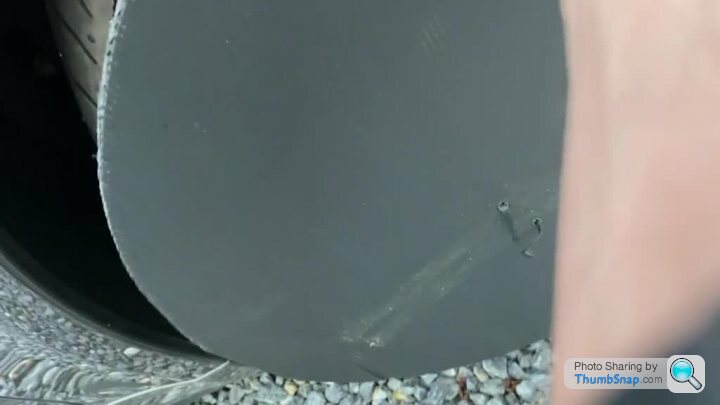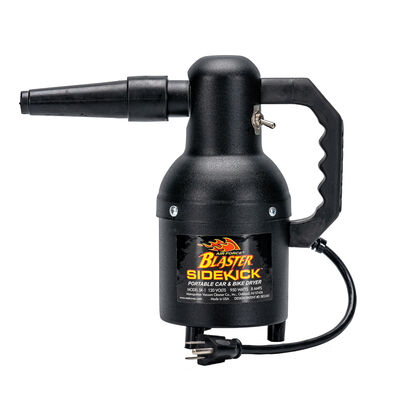Discussion
Hi All
Like many my cayman is on the drive not going anywhere until spring. I've heard Porsche discs if left for a long time with lots of rust get to a point where pitting occurs and you end up needing to replace them. Is this rubbish or am I wise every few weeks giving the car a run up the road to clear them or am I being pathetic?
Like many my cayman is on the drive not going anywhere until spring. I've heard Porsche discs if left for a long time with lots of rust get to a point where pitting occurs and you end up needing to replace them. Is this rubbish or am I wise every few weeks giving the car a run up the road to clear them or am I being pathetic?
Here’s my solution …tried many things over the years and find this works best. Lightweight plastic floor protection sheet ( B&Q ) cut to tyre size and tie wrapped to a brace bar. Simple to make and if tie wraps placed correctly on wheels car still manoeuvrable around drive if nessessary. I used double sheet on each wheel as B&Q protector sheet very flimsy . Some builders merchants have more substantial I.e. thicker sheets if needed . Good luck. 

It's not such a problem when cars are put away after being driven, but it's very much a problem when washed cold and just left for the inner side of the discs (which do not dry) to fester. Rust forms and then holds more water etc.
Even worse is when the pads stick (hence I park in gear and without the handbrake on to minimise the risk).
The real answer is very regular use or PCCB's or an'other carbon discs ??
Even worse is when the pads stick (hence I park in gear and without the handbrake on to minimise the risk).
The real answer is very regular use or PCCB's or an'other carbon discs ??
Never understood why corrosion on the inner face was a particular issue.
Is it because it’s so hard to see the inner face that it could be an easier sell for an unscrupulous garage wishing to empty their customer’s wallet?
It should be fairly self-evident that the outer faces are at risk of surface corrosion if parked outside.
Reasonably heavy rain plus a bit prevailing wind = orangey discs.
I quite like that B&Q solution!
Is it because it’s so hard to see the inner face that it could be an easier sell for an unscrupulous garage wishing to empty their customer’s wallet?
It should be fairly self-evident that the outer faces are at risk of surface corrosion if parked outside.
Reasonably heavy rain plus a bit prevailing wind = orangey discs.
I quite like that B&Q solution!
Slippydiff said:
The issue lies with the inner face of the disc corroding heavily, not the outer face.
What you say is very true , perhaps even more so when the car is in everyday use . I’ve never had the good fortune to have garage storage so my cars have to endure sitting on the drive in all weathers. Even a simple rain shower encourages beginnings of rust on outside surface of discs and longer term non use only worsens it. Having had to replace discs in the past due to this I’ve tried a few ways , short of a full car cover to prevent rainwater contacting disc surface. I’ve tried wheel covers (a la Land Rover spare wheel covers ) even bin bags but found the easiest method was the floor cover material. Cheap , easy to do and when removed there may be minor staining but over the last few years never needed to replace discs due to severe corrosion as before. Certainly works for me. Cheers. Ian Definitely as above.
Even moisture in the air will cause the disc faces to form a rusty haze.
But the biggest issue is garaging wet discs, especially after cleaning - they need a good hot run after cleaning
And it’s the unseen inner side that suffers most.
If there is enough thickness in the discs they can be skimmed.
Also one of the many benefits of having pccbs.
Even moisture in the air will cause the disc faces to form a rusty haze.
But the biggest issue is garaging wet discs, especially after cleaning - they need a good hot run after cleaning
And it’s the unseen inner side that suffers most.
If there is enough thickness in the discs they can be skimmed.
Also one of the many benefits of having pccbs.
Polome said:
What you say is very true , perhaps even more so when the car is in everyday use . I’ve never had the good fortune to have garage storage so my cars have to endure sitting on the drive in all weathers. Even a simple rain shower encourages beginnings of rust on outside surface of discs and longer term non use only worsens it. Having had to replace discs in the past due to this I’ve tried a few ways , short of a full car cover to prevent rainwater contacting disc surface. I’ve tried wheel covers (a la Land Rover spare wheel covers ) even bin bags but found the easiest method was the floor cover material. Cheap , easy to do and when removed there may be minor staining but over the last few years never needed to replace discs due to severe corrosion as before. Certainly works for me. Cheers. Ian
Fair Play to you Ian and I for one am delighted your solution is working for youSeems a very prevalent problem for cars stored outside and it’s something I’ve wrestled with since I’ve had my 987.2C. As others have said, after washing, I take it up the road and use the brakes to scrub off the surface rust before parking it up on the drive handbrake off and in gear. I then make sure I drive it within 48 hours or so and if I’m not using much thereafter, I make sure it gets a weekly run to keep the discs from corroding. Other than that, I don’t think there’s not much you can do about it.

Bit of feedback for this old post. I removed my temporary cheap wheel covers from my car yesterday…they have been on for the past 12 weeks of Scottish weather…quite pleased with the result ,only minor tarnishing that will disappear on first fast drive .worth the effort I’d say. Ps it’s a short video…not sure why it’s not shown on screen as one ..just tap…
Edited by Polome on Sunday 14th January 11:02
Polome said:

Bit of feedback for this old post. I removed my temporary cheap wheel covers from my car yesterday…they have been on for the past 12 weeks of Scottish weather…quite pleased with the result ,only minor tarnishing that will disappear on first fast drive .worth the effort I’d say.
The car rarely gets used (sadly), never mind in the rain, however I always leave it (garaged) without the handbrake on.
There is a dehumidifier running also to assist with moisture. (Aiming for 50-60% conditions).
However, I did buy a small air dryer (pictured) for when I wash the car. I find it works really well at blowing the water out of the brakes, as well as the panel gaps. Tempted with a bigger version and dry the car with it completely. I would normally do a quick run up the road also to dry the brakes out.
If space allowed, ever thought about the outdoor car shelter or ‘bubbles’ if it doesn’t move regularly during the winter?

There is a dehumidifier running also to assist with moisture. (Aiming for 50-60% conditions).
However, I did buy a small air dryer (pictured) for when I wash the car. I find it works really well at blowing the water out of the brakes, as well as the panel gaps. Tempted with a bigger version and dry the car with it completely. I would normally do a quick run up the road also to dry the brakes out.
If space allowed, ever thought about the outdoor car shelter or ‘bubbles’ if it doesn’t move regularly during the winter?

Polome said:
mlsporsche said:
Im struggling to work out what those covers are actually doing?
Rust forms at 70% humidity, you canny change the laws of physics Jim!
Agreed but when rain is lashing at 45 degrees it’s a lot worse than that…previously had to replace discs from being weather beaten…Rust forms at 70% humidity, you canny change the laws of physics Jim!
Has anyone tried this as a potential solution?
The blurb does describe use on steel discs. Presumably the anti-corrosion capability does not last after the first brake application, but if the car is parked for a lengthy period then it could be worth a try.
https://bilthamber.com/product/atom-mac/
The blurb does describe use on steel discs. Presumably the anti-corrosion capability does not last after the first brake application, but if the car is parked for a lengthy period then it could be worth a try.
https://bilthamber.com/product/atom-mac/
Tony B2 said:
Has anyone tried this as a potential solution?
The blurb does describe use on steel discs. Presumably the anti-corrosion capability does not last after the first brake application, but if the car is parked for a lengthy period then it could be worth a try.
https://bilthamber.com/product/atom-mac/
It works well on the outer side (even at the recommended 5%) when applied before washing the car. Even better if allowed to dry first. The issue is being unable to spray evenly over the inner surface and especially not being able to get at the surfaces sandwiched between the pads.The blurb does describe use on steel discs. Presumably the anti-corrosion capability does not last after the first brake application, but if the car is parked for a lengthy period then it could be worth a try.
https://bilthamber.com/product/atom-mac/
Polome's solution of preventing rain penetrating in the first place is the only one that works in my experience - regrettably not with a Porsche.

My A2 corroded it's way through the offside set of discs (nearside parked against wall) when exposed to sideways scottish rain in its first year. If it rains heavily enough the inside faces get soaked as well.
Corrosion does occur on discs even when in our detached garage but not remotely as bad as when fully exposed to the vagaries of Scottish weather.
If I were storing a cherished car outside I'd double up with Atom-Mac and covers. Detailing sites sell suitable stretch fit covers. Spray liberally, allow to dry and then drive the car to heat and fully dry. This will still leave dried product in those areas with minor pitting and scoring and also within the vents and drilled areas.
Gassing Station | Boxster/Cayman | Top of Page | What's New | My Stuff



